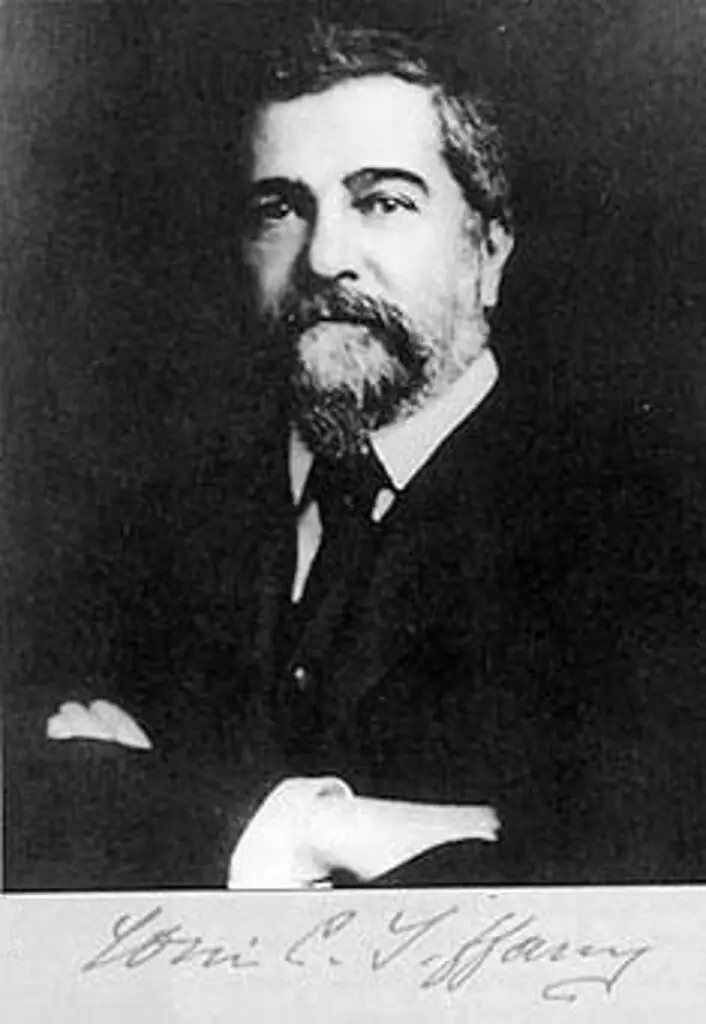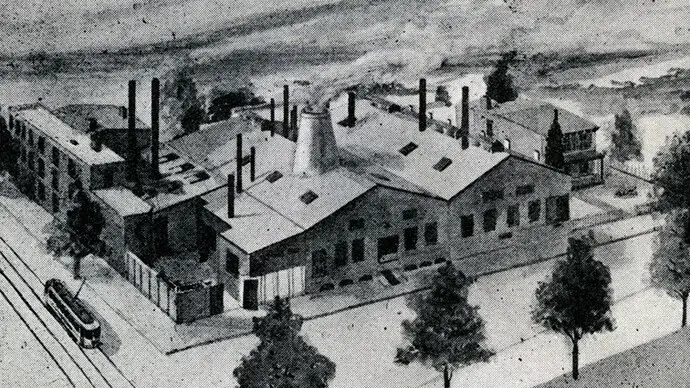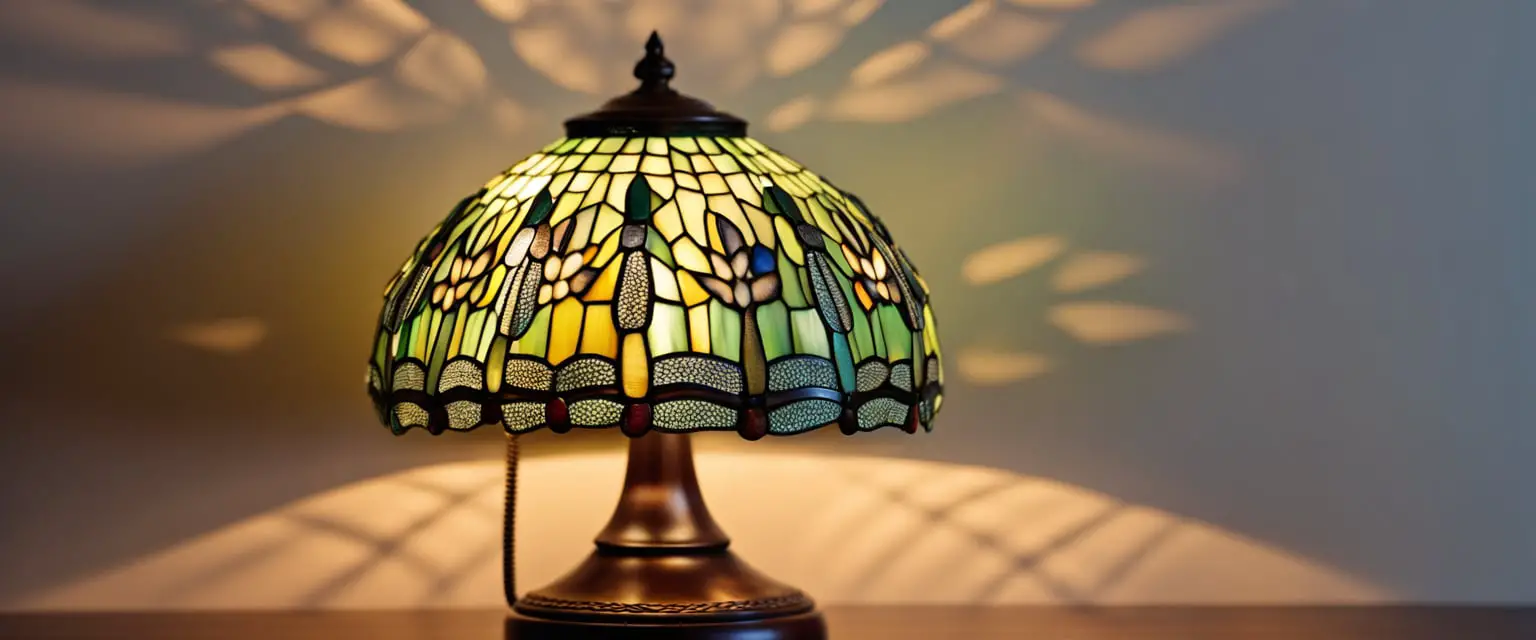The captivating saga of Tiffany Lamp History unfolds a tale of innovation, artistry, and timeless elegance, much like the intricate narrative woven into the fabric of Favrile glass. Tiffany Lamp History encapsulates the evolution of these iconic lamps, chronicling the pioneering spirit and exquisite craftsmanship that have made them enduring symbols of beauty and sophistication.
This post explores Tiffany Lamp History’s rich and storied legacy, delving into the origins, evolution, and enduring allure of these iconic lamps. Whether you’re an avid collector or fascinated by art history, immersing yourself in the narrative will deepen your appreciation for these timeless treasures and the visionary artisans behind them.

Table of Contents
Disclaimer
As an affiliate, we may earn a commission from qualifying purchases. We get commissions for purchases made through links on this website from Amazon and other third parties.
Tiffany Lamps History Overview
Tiffany lamps are iconic pieces of art. These lamps are named after Louis Comfort Tiffany, the American artist and designer who created them in the late 19th century. Tiffany lamps are renowned for their stained glass shades, which are made by hand using copper foil.
First Tiffany Lamp
The first Tiffany lamp was created in 1895 and was an instant success. Clara Driscoll, a Tiffany Studios designer, designed the lamp. The lamp featured a stained glass shade shaped like a daffodil, and it was an instant hit with collectors. The lamp was sold for $4000, an enormous sum.
Tiffany Lamp Origin
Louis Comfort Tiffany was born in New York City in 1848. He was the son of Charles Lewis Tiffany, the founder of Tiffany & Co. Louis studied art and design in Europe and returned to the United States to work for his father’s company. However, Louis was more interested in art than jewelry, and he eventually left the company to pursue his artistic endeavors.
Louis founded Tiffany Studios in 1902. The company became known for its stained glass lamps, which were handcrafted by a team of over 300 artisans. Tiffany lamps are considered part of the Art Nouveau movement, popular in the late 19th and early 20th centuries.
Today, Tiffany lamps are still highly sought after by collectors and enthusiasts. While Tiffany Studios is no longer operating, many companies produce high-quality replicas of the original lamps. These lamps are made using the same techniques and materials as the original lamps and are highly valued for their beauty and craftsmanship.
Louis Comfort Tiffany: Biography
Louis Comfort Tiffany (1848-1933) was an American artist and designer best known for his stained glass work. He was born in New York City to Charles Lewis Tiffany, the founder of Tiffany & Co., and was exposed to decorative art and design from a young age.
Education
Tiffany received a formal education in art, studying painting in Europe. His exposure to European art and design significantly impacted his later work, as he incorporated elements of Art Nouveau and other European styles into his designs.

Influence on Design
Tiffany’s work in glass was particularly influential. He founded his own glass studio in 1878 and developed a new type of glass called Favrile, which by the 1890s had a distinctive iridescent quality. This glass was used in many famous works, including his iconic Tiffany lamps.
Tiffany’s designs used natural forms and motifs, such as flowers and insects. He was also known for using color, often creating complex and subtle color schemes in his glasswork.
Today, Tiffany lamps are still highly sought after by collectors and enthusiasts. While Tiffany & Co. no longer produces lamps, many companies continue to make high-quality reproductions of Tiffany’s original designs. The lamps are also displayed in many museums, including the Morse Museum in Winter Park, Florida, which has the world’s most comprehensive collection of Tiffany’s work.
Manufacturing Process
Original Tiffany Studios
The manufacturing process of Tiffany lamps was labor-intensive and intricate, requiring skilled artisans. The original Tiffany Studios, located in Queens, New York, produced some of the most exquisite and highly sought-after stained glass lamps in the late 1800s and early 1900s.
The process began with the design of the lampshade, which Louis Comfort Tiffany and his team of designers created. Once the design was finalized, the artisans would select the glass pieces and cut them to the desired shape.
The glass was then wrapped in copper foil, a technique Tiffany patented in 1886, and soldered together using lead.
The copper-foil method allowed for greater flexibility in the design of the lampshade, allowing for more intricate and delicate shapes to be created. The leaded-glass method, the traditional method of making stained glass windows, was less flexible and did not allow for as much detail.
Contemporary Production
Today, Tiffany lamps are still produced using the same techniques as the original Tiffany Studios. However, thanks to advancements in technology and manufacturing, the production process has become more streamlined and efficient.
Many contemporary Tiffany lamp manufacturers use computer-aided design (CAD) software to create lampshade designs. This allows for greater precision and accuracy in the design process.
Once the design is finalized, the glass pieces are cut using a water jet or laser cutter, which is faster and more accurate than cutting the glass by hand.
The glass pieces are then wrapped in copper foil and soldered together using lead, just like in the original manufacturing process. However, some contemporary manufacturers use alternative materials, such as zinc or brass, instead of lead for environmental and health reasons.
Design and Artistry
Tiffany lamps are known for their intricate designs, vibrant colors, and high-quality craftsmanship. Their iconic patterns and themes are inspired by nature, with designs featuring flowers, birds, and insects. These lamps are also known for their use of texture and the incorporation of leaded glass.
Iconic Patterns and Themes
One of the most recognizable designs of Tiffany lamps is the Wisteria pattern, which features cascading clusters of purple flowers. Another popular design is the Dragonfly, which features a dragonfly with intricately detailed wings. Other designs include the Daffodil, Peony, and Lotus patterns.
Materials and Techniques
Tiffany lamps are made from various materials, including glass, bronze, and other metals. The glass used in Tiffany lamps is Favrile glass, developed by Louis Comfort Tiffany himself. This glass is known for its iridescent, shimmering quality, giving Tiffany lamps a distinctive look.
The techniques used to create Tiffany lamps are also crucial to their artistry. The leaded glass technique was used to make the intricate designs of the lamps, with each piece of glass cut and shaped by hand. The mosaic technique was also used, with small pieces of glass arranged to create intricate patterns and designs.
Tiffany & Co and Tiffany Studios
Founding and Expansion
Tiffany & Co. was founded in 1837 by Charles Lewis Tiffany as a New York City stationery and fancy goods store. The company eventually expanded to include luxury jewelry and became a household name in the industry.
In 1878, Charles’ son, Louis Comfort Tiffany, joined the company as a designer, bringing with him a passion for decorative arts and a desire to create beautiful objects that were both functional and artistic.
Tiffany Lamps and the Company
1885, Louis Comfort Tiffany established the Tiffany Glass Company, which later became Tiffany Studios. The company employed over 300 workers, including designers, artists, glassblowers, and other artisans.
Tiffany Studios produced many decorative objects, including stained glass windows, mosaics, and lamps.
The first Tiffany lamp was created around 1895. It was a collaboration between Louis Comfort Tiffany and Clara Driscoll, the head of the Women’s Glass Cutting Department at Tiffany Studios. The lamps were made using the copper foil technique, which allowed for intricate designs and vibrant colors. Each lamp was handcrafted and unique, and no two were exactly alike.
Tiffany Studios produced lamps in various styles, including geometric, floral, and nature-inspired designs. The lamps quickly became popular and were sought after by collectors and enthusiasts alike. Today, original Tiffany lamps can fetch millions of dollars at auction.
Although Tiffany Studios closed in 1932, Louis Comfort Tiffany’s legacy and beautiful creations live on. Tiffany lamps are still highly prized by collectors and are considered to be some of the most iconic examples of American decorative arts.
Cultural and Historical Significance
Tiffany lamps have a rich cultural and historical significance. They are considered a symbol of the Art Nouveau movement, which emerged in the late 19th century and was characterized by its ornamental and flowing designs.
The movement reacted to society’s industrialization and sought to create a new aesthetic that emphasized beauty and nature. The Art Nouveau movement was particularly popular in Europe but also had a significant impact on American design.
Tiffany in Museums
Tiffany lamps are highly valued by collectors and museums alike. The Metropolitan Museum of Art in New York City has an extensive collection of Tiffany lamps acquired from the Morse Collection in 1958.
The museum’s collection includes over 100 lamps, including some of Tiffany’s most famous designs, such as the Dragonfly and Wisteria lamps. The museum also has an extensive collection of Tiffany objects, including stained glass windows, vases, and mosaics.
Art Nouveau Movement
Tiffany lamps are also closely associated with the Art Nouveau movement. The movement was characterized by its flowing and organic designs inspired by nature.
Tiffany lamps were particularly popular among Art Nouveau collectors because of their intricate designs and vibrant colors. They were often used as decorative objects in homes and public spaces and were considered a symbol of the movement’s emphasis on beauty and craftsmanship.
Tiffany Lamps History: Laurelton Hall
Laurelton Hall was the Long Island estate of Louis Comfort Tiffany, the renowned artist and designer who created the iconic Tiffany lamps. Built between 1902 and 1905, the estate was located in Oyster Bay, Long Island. It was a sprawling 84-room mansion on 600 acres of land, one of Tiffany’s most significant works of art.
Long Island Estate
Laurelton Hall was built on the site of the former Hotel Laurelton, a popular resort in the early 1900s. Tiffany purchased the land in 1902 and began construction on the estate shortly after that.
The mansion was designed in the Art Nouveau style, which was popular at the time, and it was filled with Tiffany’s own creations, including stained glass windows, mosaics, and other decorative elements.
Architectural Marvel
The mansion was an architectural marvel with intricate details and stunning design. The gardens were also a work of art, with 60 acres of carefully planned and tended grounds. Tiffany even built a chapel on the estate, known as the Tiffany Chapel, a interior design masterpiece.
Laurelton Hall was tragically destroyed by fire in 1957, but its legacy lives on. Today, the Charles Hosmer Morse Museum of American Art in Winter Park, Florida, has a collection of Tiffany’s works, including many pieces from Laurelton Hall. The museum also recreates the Tiffany Chapel, which is a must-see for anyone interested in Tiffany’s work.
Tiffany Lamps: A Legacy and Modern Day
Louis Comfort Tiffany’s artistic and innovative approach to lighting fixtures has impacted interior design. His signature “Tiffany lamps” are still celebrated for their beauty and craftsmanship and remain a popular choice for those looking to add a touch of elegance to their decor.
Influence on Interior Design
Tiffany lamps are considered one of the most iconic artistic lighting fixtures. They were first introduced in the late 19th century and quickly became popular due to their unique designs and intricate craftsmanship.
Tiffany’s vibrant colors and nature-inspired motifs set his lamps apart from other lighting fixtures.
Today, Tiffany lamps are a popular choice for those looking to add a touch of elegance to their homes. They are often used as statement pieces in living rooms, dining rooms, and bedrooms.
Many interior designers use Tiffany lamps to add a touch of color and texture to their designs.
Current Manufacturers and Authenticity
While Tiffany Studios closed in 1932, some manufacturers still produce Tiffany-style lamps. However, it is essential to note that these lamps are not made by Tiffany & Co. and are not considered authentic Tiffany lamps.
Collectors seek authentic Tiffany lamps and can fetch high prices at auctions. To ensure authenticity, you should purchase from reputable dealers and have the lamp authenticated by an expert.
Tiffany Lamp Origin
Louis Comfort Tiffany, the son of Charles Lewis Tiffany, the founder of Tiffany & Co., was a renowned artist and designer. He studied painting in Paris and became interested in interior design and decorative arts.
In 1895, he created his first leaded-glass lamp, the Tiffany lamp.
Louis Comfort Tiffany Education
Louis Comfort Tiffany received his education at the Pennsylvania Academy of Fine Arts. He later studied painting in Paris under the tutelage of Leon Bailly and Gustave Boulanger.
He was heavily influenced by the Art Nouveau movement and Japanese art, which can be seen in his designs for Tiffany lamps.
What Era are Tiffany Lamps
Tiffany lamps were first introduced in the late 19th century and quickly became popular due to their unique designs and intricate craftsmanship. They are considered one of the most iconic examples of artistic lighting fixtures.
Today, Tiffany lamps continue to be popular choices for those who want to add a touch of elegance to their homes.
Frequently Asked Questions
What is the history behind Tiffany lamps?
Louis Comfort Tiffany originally created Tiffany lamps in the late 19th century. Tiffany was an American artist and designer best known for his stained glass work.
He founded the Tiffany Glass Company in 1885, which later became Tiffany Studios. The company produced various decorative items, including lamps, vases, and other household objects.
Where is the original birthplace of Tiffany lamps?
Tiffany lamps were made at Tiffany Studios, located in New York City. The first Tiffany lamp was created in 1895 by Clara Driscoll, the head of the Women’s Glass Cutting Department at Tiffany Studios.
What was the significance of Laurelton Hall in relation to Tiffany lamps?
Laurelton Hall was the country estate of Louis Comfort Tiffany on Long Island. The estate was designed to showcase Tiffany’s artistic vision and included a large collection of his works, including many of his famous lamps. Unfortunately, a fire in 1957 destroyed the estate.
Which manufacturers are responsible for the creation of Tiffany lamps today?
While Tiffany Studios is no longer in operation, manufacturers still produce lamps in the Tiffany style, which are often referred to as Tiffany-style lamps.
Some well-known manufacturers include Meyda Tiffany, Dale Tiffany, and Quoizel.
How can one identify an authentic Tiffany lamp?
Collectors highly seek Authentic Tiffany lamps, which can be pretty valuable.
One way to identify an authentic Tiffany lamp is to look for the signature “Tiffany Studios New York” on the base. Additionally, authentic Tiffany lamps are typically made with high-quality materials, such as hand-rolled glass and bronze.
What is the connection between Tiffany & Co. and Tiffany lamps?
While Tiffany’s family members founded Tiffany & Co. and Tiffany Studios, they are separate entities.
Tiffany & Co. is a jewelry company, while Tiffany Studios focuses on decorative arts. Both companies are known for their high-quality craftsmanship and innovative designs.
What era are Tiffany lamps?
Tiffany lamps are considered part of the Art Nouveau movement, which was popular in the late 19th and early 20th centuries. The style was characterized by flowing lines, organic shapes, and a focus on natural forms and materials.
Tiffany lamps are known for their intricate, colorful designs, often featuring nature-inspired motifs such as flowers and insects.




Leave a Reply